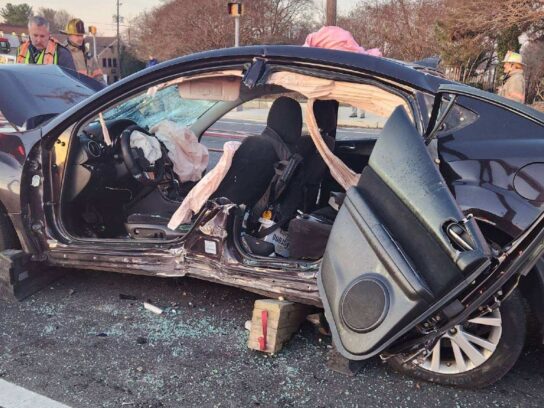
Montgomery County’s plan to eliminate road related fatalities and serious injuries by 2030 was launched in 2021. That year, there were 40 fatal crashes.
In 2023, there were 44 and already this year there have been 42.
Toward the end of 2023, Washington Area Bicyclists Association Maryland Organizer Seth Grimes wrote in a press release, “Montgomery County has experienced 43 road deaths so far in 2023, including 14 pedestrians and one bicyclist, actually an increase over the five-year average.”
In an email to MCM, Grimes wrote, “So how helpful have the county’s and the state’s Zero Deaths programs been in reducing fatalities? The answer is, not at all.”
Chart courtesy of the Maryland Zero Deaths website
The county’s Vision Zero efforts recently received $520,000 in federal funding to update the action plan. Those funds are in addition to the county’s $130,000 match.
According to Wade Holland, the county coordinator of Vision Zero, road deaths can’t be completely eliminated by funding. But it can help, he said.
Almost $300,000 of the new funds will be used in a Safe Turns Demonstration Project to erect temporary quick-build safety measures designed to slow traffic, especially at turns. The flex poles and curb hardening will be installed at “traditionally underserved communities and areas with a history of turn-related crashes,” according to a news release from Montgomery County Department of Transportation (MCDOT).
Ending deaths by 2030, “That’s still the goal,” he said, adding, “This is very much a stretch goal.” The idea is to decrease deaths, he said, noting, “No death or serious injury is acceptable.”
In a news release, Executive Marc Elrich expressed gratitude for the federal dollars, noting, “These efforts will make a real difference in reducing crashes and saving lives, especially in underserved communities.”
Chris Conklin, MCDOT Director, explained in a news release, “The Vision Zero Action Plan is a roadmap to a safer future, and this funding allows us to make vital updates that reflect both the progress we’ve made and the areas were we still need improvement.”
He added, “By testing innovative safety solutions at intersections and gathering robust data, we can contribute to evolve our approach and protect the most vulnerable road users.”


Comments are closed.